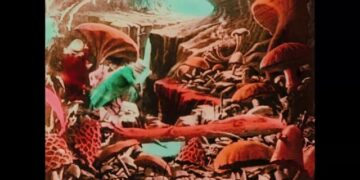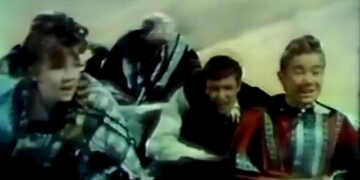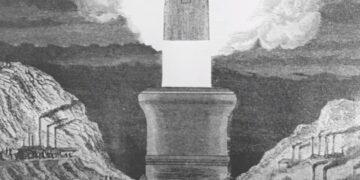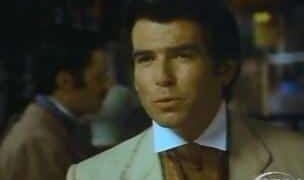Jules Verne is a name that has become synonymous with adventure, science fiction, and imagination. His works have been translated into countless languages and have captivated readers for generations. But who was the man behind these stories? In this article, we’ll dive into Jules Verne’s life, works, and legacy to gain a deeper understanding of this literary giant.
Introduction to Jules Verne
Jules Gabriel Verne was born on February 8, 1828, in Nantes, France. He was the eldest of five children and showed an early interest in literature and science. His father was a successful lawyer, and the family was relatively well-off. However, Jules’ relationship with his father was strained, and he often felt pressure to pursue a career in law himself.
Despite his father’s wishes, Jules studied law briefly but soon abandoned it to pursue his true passion: writing. He began writing plays and operettas but found little success. It wasn’t until he turned to novels that he found his true calling.
Jules Verne’s early life and education
Jules Verne’s early life was marked by tragedy. When he was just 11 years old, his mother died of tuberculosis. This had a profound impact on him, and he became increasingly introverted and solitary. He found solace in literature, devouring books by the likes of Edgar Allan Poe and Victor Hugo.
Verne attended boarding school in Nantes and later studied law in Paris. His time in Paris exposed him to a wider world of science and culture, and he became fascinated by the latest advances in technology and exploration. This fascination would inform much of his later writing.
Jules Verne’s writing career
Jules Verne’s writing career began in earnest in the 1850s. He wrote several plays and operettas, but it wasn’t until he turned to novels that he found his true calling. His first novel, “Five Weeks in a Balloon,” was published in 1863 and was an immediate success. This was followed by a string of bestsellers, including “Journey to the Center of the Earth,” “Twenty Thousand Leagues Under the Sea,” and “Around the World in Eighty Days.”
Verne’s writing was characterized by a deep fascination with science and technology, as well as a sense of adventure and exploration. He often wrote about fantastic machines and inventions that seemed impossible at the time but would later come to fruition.
Jules Verne’s love life and friendships
Jules Verne’s love life was somewhat complicated. He married Honorine de Viane Morel in 1857, but the couple had a difficult relationship. Honorine was said to be jealous and possessive, and Verne struggled to balance his writing career with his family life.
Verne had several close friendships throughout his life, including with the French publisher Pierre-Jules Hetzel and the American writer Edgar Allan Poe. However, his relationship with Hetzel was at times strained, with the publisher exerting a great deal of control over Verne’s writing.
Jules Verne’s life outside of writing
Jules Verne was not just a writer but also a man of many interests. He was an avid traveler and explorer, and much of his writing was inspired by his own experiences. He was also a collector of art and artifacts, and his home was filled with curiosities from around the world.
Verne was also involved in politics and served as a town councilor in Amiens, where he lived for much of his later life. He was a staunch supporter of the Franco-Prussian War and even went so far as to build a ship that he hoped would aid in the defense of his country.
Jules Verne’s best quotes
Jules Verne was a master of the pithy, memorable quote. Here are just a few of his best:
- “The sea is everything. It covers seven tenths of the terrestrial globe. Its breath is pure and healthy. It is an immense desert, where man is never lonely, for he feels life stirring on all sides.”
- “Science, my lad, is made up of mistakes, but they are mistakes which it is useful to make, because they lead little by little to the truth.”
- “We may brave human laws, but we cannot resist natural ones.”
- “The earth does not belong to man, man belongs to the earth.”
- “Anything one man can imagine, other men can make real.”
Jules Verne’s best books
Jules Verne wrote dozens of books over the course of his career, but some stand out as his best. Here are a few that are not to be missed:
- “Journey to the Center of the Earth”: This classic adventure story follows a group of explorers as they journey deep into the earth’s crust.
- “Twenty Thousand Leagues Under the Sea”: In this novel, a group of adventurers set out to discover the secrets of a mysterious sea creature and end up on board the incredible submarine, the Nautilus.
- “Around the World in Eighty Days”: This novel follows the exploits of Phileas Fogg, a wealthy Englishman who makes a bet that he can travel around the world in just 80 days.
Jules Verne’s first book
Jules Verne’s first book was “Five Weeks in a Balloon,” published in 1863. The novel tells the story of a group of explorers who journey across Africa in a hot air balloon.
“Five Weeks in a Balloon” was an immediate success and established Verne as a major literary figure. It was followed by a string of bestsellers that cemented his place in the literary canon.
Jules Verne’s last book
Jules Verne’s last book was “The Invasion of the Sea,” published in 1905. The novel tells the story of a group of engineers who attempt to build a dam across the Mediterranean Sea in order to create new land.
“The Invasion of the Sea” was not as well-received as Verne’s earlier works, and some critics felt that it was too pessimistic in its view of technology and progress.
Jules Verne’s books in order
Jules Verne wrote over 60 books over the course of his career, so it can be difficult to know where to start. Here is a list of his most famous works, in order of publication:
- “Five Weeks in a Balloon”
- “Journey to the Center of the Earth”
- “From the Earth to the Moon”
- “Around the World in Eighty Days”
- “Twenty Thousand Leagues Under the Sea”
- “The Mysterious Island”
- “The Survivors of the Chancellor”
- “Michael Strogoff”
- “Off on a Comet”
- “The Underground City”
Jules Verne’s books or characters become movies or other media
Jules Verne’s works have been adapted into countless movies, TV shows, and other media over the years. Some of the most famous adaptations include:
- “20,000 Leagues Under the Sea” (1954): This Disney classic stars Kirk Douglas and James Mason and features a memorable portrayal of Captain Nemo and his submarine, the Nautilus.
- “Journey to the Center of the Earth” (2008): This action-packed adventure film stars Brendan Fraser and explores the depths of the earth in search of lost treasure.
- “Around the World in 80 Days” (1956): This classic film stars David Niven as Phileas Fogg and features a memorable cameo by Frank Sinatra.
Other artists who inspired Jules Verne
Jules Verne was inspired by many other artists and writers throughout his life. Some of the most influential figures include:
- Edgar Allan Poe: Verne was a huge fan of Poe’s work and even translated some of his stories into French.
- H.G. Wells: Verne and Wells were contemporaries and often compared to one another. Verne was said to have been jealous of Wells’ success but also admired his work.
- Gustave Doré: Verne was a huge fan of Doré’s illustrations and often sought out his work for his own books.
Other writers to be read absolutely after Jules Verne
If you’re a fan of Jules Verne’s work, there are many other writers you should check out. Here are just a few:
- H.G. Wells: Wells was a contemporary of Verne’s and wrote many classic science fiction works, including “The Time Machine” and “The War of the Worlds.”
- Arthur Conan Doyle: Doyle is best known for his Sherlock Holmes stories, but he also wrote several science fiction and adventure novels.
- J.R.R. Tolkien: Tolkien’s works are more fantasy than science fiction, but they share Verne’s sense of adventure and imagination.
Jules Verne’s criticism, backbiting, and gossip
Despite his success, Jules Verne was not immune to criticism and gossip. Some critics felt that his writing was too formulaic and lacked depth. Others accused him of plagiarism or of being overly influenced by other writers.
Verne was also the subject of gossip and backbiting, particularly in his personal life. His relationship with his wife was often the subject of speculation, and there were rumors of infidelity on both sides.
Jules Verne’s legacy: why he is still alive
Jules Verne’s legacy is still alive today, more than 100 years after his death. His works continue to inspire new generations of readers and writers, and his influence can be seen in countless movies, TV shows, and other media.
Verne’s legacy is also one of imagination and adventure. He showed readers that anything was possible if they were willing to dream big and take risks. His works continue to inspire us to explore the world around us and to push the boundaries of what we know and what we can do.
Conclusion: Jules Verne’s lasting impact
Jules Verne was a literary giant whose works continue to inspire and captivate readers around the world. His legacy is one of adventure, imagination, and a deep fascination with science and technology. Whether you’re a longtime fan or are just discovering his works for the first time, there’s no denying the lasting impact that Jules Verne has had on literature and popular culture.
Join the WFTS revolution and champion the enduring allure of books with us! We’re committed to keeping your experience ad-free and authentically engaging.
Loved our content? Fuel our passion by treating us to a coffee or enrich your collection with the captivating books of Jules Verne on Amazon through this link.
Step into our world, where we value substance over flash, and keep the magic of books alive.














